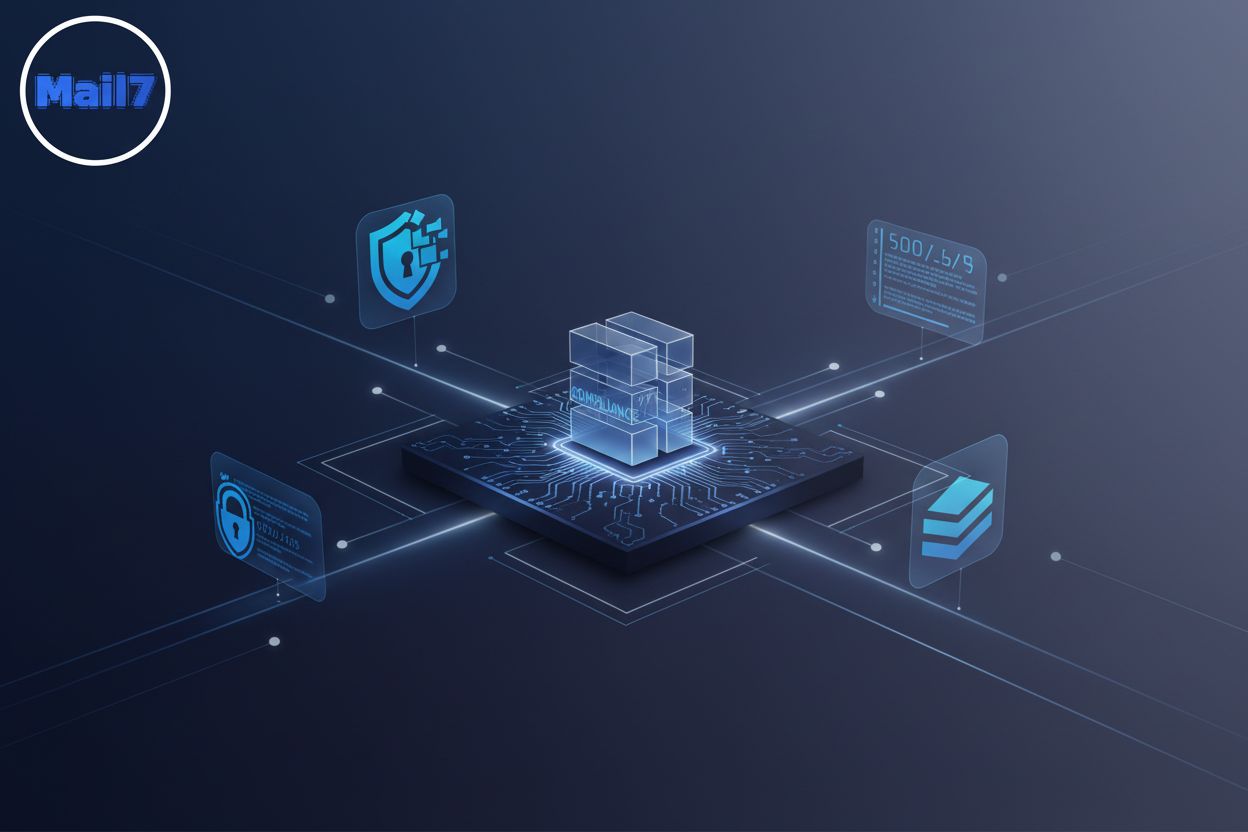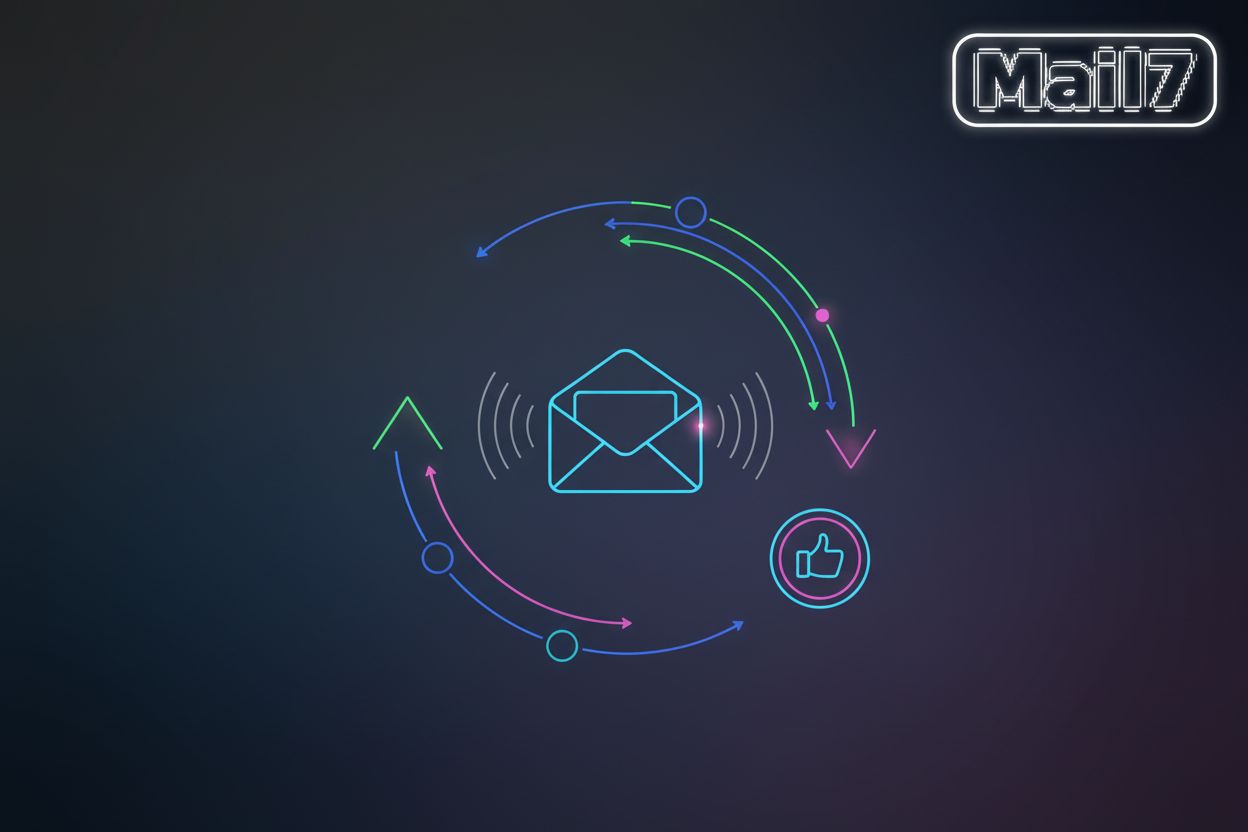QA Engineers: Level Up Your Testing with Temporary Email Address Generators
The QA Challenge: Email Testing Bottlenecks
QA teams are often swamped with repetitive tasks, and email testing can be a major time sink. Think about how many test accounts you need to verify signup flows, password resets, and other common features! What if you could streamline this process and reclaim valuable time?
Traditional email testing methods create numerous bottlenecks for QA engineers. Let's break down the key challenges:
- Time-consuming and resource-intensive: Creating and managing numerous real email accounts demands significant effort. QA engineers spend valuable time manually checking inboxes, confirming email delivery, and verifying content, which detracts from higher-priority tasks.
- Risk of spam and data privacy issues: Using real email accounts for testing introduces the risk of spam accumulation and potential data privacy breaches. This can lead to compliance issues, especially in industries like healthcare and finance, where data protection is paramount.
- Manual testing limits scope and speed: Manual email testing is inherently limited in scope and speed. It is difficult to simulate complex email workflows, such as delayed or triggered emails, and to test various email clients and devices efficiently.
For instance, in the retail sector, testing promotional campaigns requires verifying personalized content, discount codes, and accurate product information across different email templates. Temporary email generators help here by allowing QA to quickly spin up unique test accounts for each template variation, ensuring each one is checked. Similarly, in the healthcare industry, QA must ensure secure delivery of sensitive patient data, such as appointment reminders and test results. Temporary emails facilitate this by providing isolated testing environments where data handling can be meticulously monitored without risking real patient information.
The challenges extend beyond just time and resources. QA teams often grapple with these specific issues:
- Difficulty managing multiple test accounts: Maintaining a large number of test email accounts, each with unique configurations and credentials, can be a logistical nightmare. QA engineers face constant challenges in tracking account statuses, preventing conflicts, and ensuring consistent testing conditions.
- Inconsistent testing environments: Real email accounts are subject to unpredictable factors, such as server outages, spam filters, and varying client configurations. This inconsistency can lead to unreliable test results and make it difficult to isolate and reproduce bugs.
- Challenges in automating complex workflows: Automating complex email workflows, such as multi-step verification processes and triggered email sequences, can be difficult with traditional testing methods. QA engineers often rely on manual scripting or third-party tools, which can be costly and time-consuming to implement.
Inefficient email testing practices ultimately impact the entire software development lifecycle. Consider these potential consequences:
- Increased testing time delays product releases: Lengthy manual email testing processes can significantly extend QA cycles, delaying product releases and time-to-market. This can be especially detrimental in fast-paced industries where agility and responsiveness are critical for success.
- Higher QA costs due to manual effort: The manual overhead associated with traditional email testing drives up QA costs, diverting resources from other important testing activities, such as performance and security testing.
- Potential for missed bugs leading to production issues and customer dissatisfaction: Limited test coverage and inconsistent testing environments increase the risk of missed bugs in email workflows. This can lead to production issues, such as undelivered emails, incorrect content, and broken links, resulting in customer dissatisfaction and brand damage.
Addressing these challenges requires a more innovative and efficient approach to email testing. The next section will introduce temporary email address generators as a powerful solution for QA teams seeking to overcome these limitations.
Introducing Temporary Email Address Generators
QA teams face significant challenges in email testing, but temporary email address generators offer a streamlined solution. These tools can help you reclaim valuable time and resources.
Temporary email address generators provide on-demand, short-lived email addresses specifically for testing purposes. You gain instant access without any registration process. These addresses automatically expire or are deleted after a set period, which is a huge advantage in testing scenarios.
- Avoid spamming real email accounts: Temporary email addresses keep your inboxes clean and focused on important communications.
- Protect developer and tester identities: You can maintain privacy and avoid potential security risks by using temporary addresses.
- Enable parallel testing with multiple addresses: QA teams can efficiently test various scenarios simultaneously without managing numerous real accounts.
- Enable more robust automation of testing workflows: You can seamlessly integrate temporary email addresses into automated test scripts.
Mail7 offers several features designed to enhance the email testing experience for developers. Here's a breakdown of the key capabilities:
- Create disposable email addresses for QA testing: Mail7 allows you to quickly generate temporary addresses for testing purposes.
- Access real-time emails for instant verification: You can immediately view emails sent to these temporary addresses, which allows for quick verification of email-related functionalities.
- Automate your email testing workflow with Mail7's API: You can easily integrate Mail7's api into your existing testing framework to automate email address creation and verification.
- Enjoy enterprise-grade security with encrypted communications: Mail7 ensures that all email communications are encrypted, providing a secure testing environment.
- Leverage a developer-friendly REST API with comprehensive documentation: Mail7 offers a REST api that is easy to use and well-documented, making it simple to integrate into your development workflow.
- Benefit from unlimited test email reception: Mail7 allows you to receive an unlimited number of test emails, ensuring comprehensive testing coverage.
Imagine you're testing a new user signup flow. With Mail7, you generate a unique temporary email for each test run. This prevents cluttering your real inbox and ensures each test starts with a clean slate. The real-time access to these test emails allows you to immediately verify account activation links, confirmation codes, or welcome message content.
Temporary email address generators offer a practical way for QA engineers to overcome email testing bottlenecks.
Choosing the Right Temporary Email Generator for QA
QA teams face a crucial decision: selecting the right temporary email generator. But with so many options, how do you choose?
When selecting a temporary email generator for QA, several key features can significantly enhance your testing process. Here's what to consider:
Reliable and fast email delivery. Quick and consistent email delivery ensures timely verification of signup processes, password resets, and other essential features. Imagine testing a critical e-commerce platform where delayed email confirmations could lead to lost sales; a reliable temporary email service ensures immediate confirmation delivery, making a reliable service essential.
Developer-friendly API for automation. A robust api allows seamless integration with your existing test automation frameworks. This is especially helpful for QA engineers who want to automate complex email workflows, such as multi-step verification processes.
Custom domain support. Custom domains add professionalism and credibility to your testing environment. You can create a consistent and branded experience for your QA team, which is particularly useful when testing client-facing applications.
Secure and private communication. Data privacy is important, even in testing. Look for services that offer encrypted communications and data deletion policies to protect sensitive information.
Sufficient storage and retention policies. Evaluate how long emails are stored and if you have adequate storage for your testing needs. This is especially critical for QA teams that need to review past test results or debug issues.

Several services cater to the needs of QA engineers.
- Mailinator offers a public, web-based inbox, making it easy to access emails without registration.
- Guerrilla Mail provides disposable email addresses with customizable options and no sign-up required.
- Temp-Mail allows you to generate temporary addresses instantly for immediate use.
- 10 Minute Mail provides self-destructing email addresses that expire after ten minutes, ideal for quick tests.
Comparing features and pricing is essential. Some services offer free basic plans, while others provide premium features like custom domains and api access for a fee.
Beyond these readily available services, QA teams seeking greater control may consider open-source temporary email projects.
- Advantages of self-hosting: You gain complete control over data privacy and security. You can also customize the service to fit your specific needs.
- Disadvantages of self-hosting: Self-hosting requires technical expertise for setup, maintenance, and security. You're responsible for ensuring reliable email delivery and preventing abuse.
- When considering open-source options, carefully evaluate the project's community support, security features, and ease of deployment.
Choosing the right temporary email generator depends on your QA team's specific needs, technical capabilities, and budget. The next section will explore how to integrate temporary email generators into your QA workflow.
Integrating Temporary Emails into QA Workflows
QA teams spend countless hours on repetitive tasks like creating test accounts for email verification. Streamlining these workflows can dramatically improve efficiency.
Temporary email address generators offer a practical solution for QA engineers to overcome email testing bottlenecks. (Why Use Temporary or Disposable Email Addresses? - Mailinator) Let's explore how you can integrate these tools into various QA workflows.
Apis enable you to programmatically create and manage test email addresses. This is invaluable for automated testing frameworks. You can also verify the delivery and content of emails without manual intervention.
- Imagine automating a test suite for a complex e-commerce platform. The system needs to verify order confirmations, shipping updates, and password resets. Using an api, the test suite creates unique temporary emails for each test run.
- You can also test a healthcare application where users receive sensitive appointment reminders. QA can ensure the secure delivery of these notifications.
Here's how you might use Python to check for expected emails:
import requests
import time
def check_email(email_id, api_key):
url = f"https://api.example.com/emails/{email_id}"
headers = {"X-API-Key": api_key}
for attempt in range(5):
response = requests.get(url, headers=headers)
if response.status_code == 200 and "Your code" in response.text:
return True
time.sleep(2)
return False
This script polls an email api, checking for a specific email based on its ID. It retries for a short period before giving up. The email_id might be a unique identifier for a generated temporary inbox, and the api_key is for authentication.
Temporary emails are ideal for testing signup and account creation flows. QA teams can validate email formats and deliverability without risking real email accounts. It is important to handle bounce and spam reports to ensure a smooth user experience.
- In the retail sector, QA can verify that new users receive confirmation emails with correct discount codes. They can test different email clients and devices to ensure compatibility.
- A financial application can use temporary emails to test the two-factor authentication process. They can validate that users receive emails with the right authentication codes.
You can test multi-step email-driven processes like password resets with temporary emails. You can simulate different user roles and permissions to ensure proper access controls. It is also important to verify email content and personalization for different user segments.
- With temporary emails, you can test a multi-step verification process in a new financial application. QA can simulate different users and permissions to verify access controls. For example, temporary emails can be generated for different simulated user personas to test their respective access to password reset functionalities.
- For example, QA can ensure that a password reset link expires after a set period. This validates the security of the password reset workflow.
By incorporating temporary email address generators into your QA workflows, you can significantly reduce testing time and improve the overall quality of your email-dependent applications.
Best Practices for Using Temporary Emails in QA
It's easy to overlook the importance of security and compliance when using temporary email addresses in QA, but it's a critical aspect of responsible testing. Let's delve into the best practices that ensure a secure and compliant QA process.
Choosing reputable services with strong security measures is paramount. You must also avoid using sensitive data in test emails and regularly audit and update your testing infrastructure.
- Opt for providers with robust security protocols: Ensure the temporary email service employs encryption, secure data storage, and strict access controls.
- Avoid sharing sensitive data: It's best to refrain from using real or sensitive data within your test emails to protect user privacy and prevent unintended data leaks.
- Implement regular security audits: Conduct regular security assessments of your testing environment and tools, as this helps identify and remediate potential vulnerabilities.
For instance, in the healthcare sector, QA teams must ensure that no real patient data is used in testing scenarios. Instead, they should rely on synthetic data or anonymized datasets to simulate real-world conditions without compromising privacy. The work of projects like The Human Screenome Project highlights the importance of data privacy and security in digital research, which is equally essential in QA testing.
Another challenge is avoiding blacklisting and rate limiting. This can be achieved by using a variety of email domains and IPs, implementing proper email headers and authentication (SPF, DKIM, DMARC), and respecting rate limits and throttling mechanisms.
- Employ diverse email domains and IPs: Don't rely on a single temporary email domain or ip address, as this increases the risk of being flagged as spam.
- Implement authentication protocols: Make sure your temporary email service supports SPF, DKIM, and DMARC to authenticate your test emails and improve deliverability.
- Adhere to rate limits: Be mindful of the sending limits imposed by your temporary email service provider and avoid exceeding them to prevent throttling or blacklisting.
Data integrity is key for reliable QA processes. This involves cleaning up test data regularly, using consistent naming conventions, and documenting testing procedures and configurations.
- Clean up test data routinely: Delete or purge temporary email accounts and associated data after completing testing to prevent data accumulation and potential security vulnerabilities.
- Adopt naming conventions: Implement clear and consistent naming conventions for test email accounts and data to ensure easy identification and prevent confusion.
- Document testing processes: Maintain detailed documentation of your email testing procedures and configurations to ensure consistency and repeatability.
Maintaining test data integrity is particularly important in the financial sector, where QA teams must ensure that transactional data is accurate and consistent across different email notifications. Temporary emails facilitate testing this consistency by enabling QA to quickly generate and verify emails for various transaction types and user scenarios.
Troubleshooting Common Issues
Encountering issues? Don't worry; many common problems have straightforward solutions. Here's how to tackle email and api integration challenges:
Check spam folders: Sometimes, test emails end up misclassified. Check the spam or junk folder within the temporary email provider's interface.
Verify DNS records: Ensure your email configuration is correct.
Contact your provider: Reach out for support to resolve delivery problems.
Verify api keys: Double-check keys and endpoints for accuracy.
Handle errors: Implement proper error handling for authentication.
Debug requests: Examine api requests and responses step by step. Using browser developer tools or tools like Postman can be really helpful here.
Isolate environments: Ensure consistent, controlled conditions.
Use consistent data: Use the same data and configurations for each test.
Address timing issues: Look for and resolve race conditions.
With these troubleshooting tips, you can resolve common issues efficiently.
The Future of Email Testing in QA
The world of email testing is rapidly changing! As QA engineers, you're on the front lines, ensuring that email integrations are seamless and bug-free. Temporary email address generators are evolving, and understanding these changes is crucial for staying ahead.
Ai transforms how we test emails, by automating tasks and improving accuracy. Here are some key areas where ai is making a difference:
- Automated email content analysis. Ai algorithms, using natural language processing and pattern matching, analyze email content for tone, grammar, and relevance. For example, an ai system can verify that personalized welcome emails in the retail industry contain the correct customer names and product recommendations.
- Intelligent test data generation. Ai can generate realistic and diverse test data. For instance, ai could create varied patient records for testing secure email delivery in a healthcare application, simulating different patient demographics, conditions, and data complexities, ensuring compliance with privacy regulations.
- Predictive email deliverability assessment. Ai models predict the likelihood of emails reaching inboxes by analyzing factors like sender reputation, content characteristics, and historical delivery rates. In the finance sector, this could help ensure that critical transaction alerts are not marked as spam, reducing customer service inquiries.
Integrating temporary emails into ci/cd pipelines is streamlining the testing process. This allows for faster feedback and more reliable releases.
- Automated email testing as part of the build process. Temporary email addresses are automatically created and used to validate email workflows during each build. For example, a script within the ci/cd pipeline could automatically generate a temporary email, trigger a password reset, and then verify the arrival and content of the password reset email in a web development project, preventing delays if the email server has problems.
- Real-time feedback on email functionality. Immediate test results provide developers with fast feedback on email delivery and content. This is crucial for quickly fixing issues and maintaining high-quality email integration in a developer tools project.
- Faster and more reliable releases. Automated email testing ensures that email-related features are thoroughly tested before release. This reduces the risk of bugs and improves the overall reliability of software testing projects.
The landscape of email testing constantly evolves, with new techniques and tools emerging. Here's how QA engineers can stay at the top of their game:
- Staying up-to-date with the latest email testing techniques. QA engineers need to continuously learn about new testing methods and tools. They should follow industry blogs like [example blog], attend webinars from [example organization], and participate in online communities like [example forum] to stay informed.
- Sharing knowledge and best practices within the QA community. Collaboration and knowledge sharing are essential for improving email testing practices. QA engineers can contribute to open-source testing frameworks or share their expertise at conferences.
- Contributing to the development of better testing tools and frameworks. QA engineers can play a crucial role in shaping the future of testing tools. By providing feedback to tool vendors and contributing to open-source projects, they can help create more effective and efficient testing solutions.
Temporary email address generators are essential for modern QA. By embracing ai and automation, QA teams can streamline their workflows and improve email testing quality.





